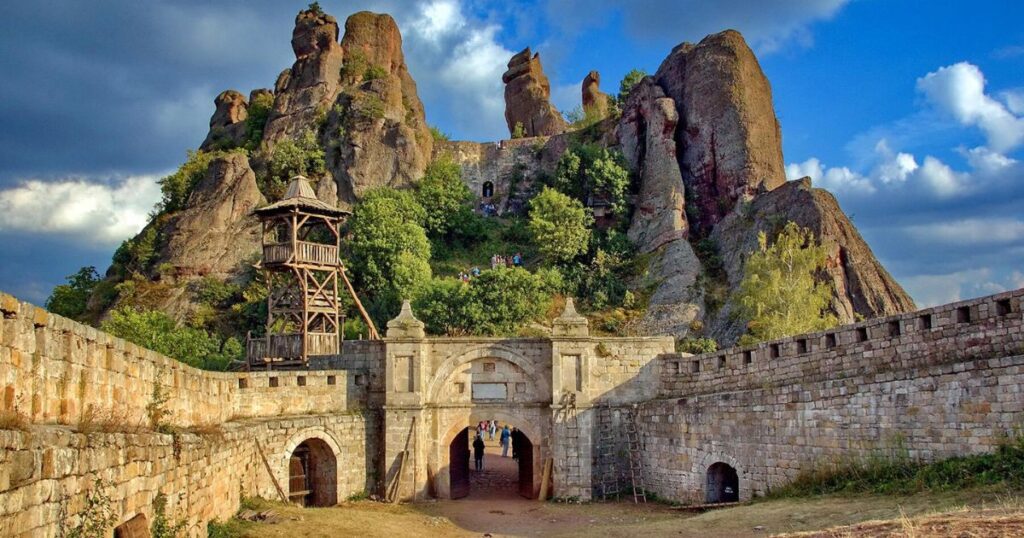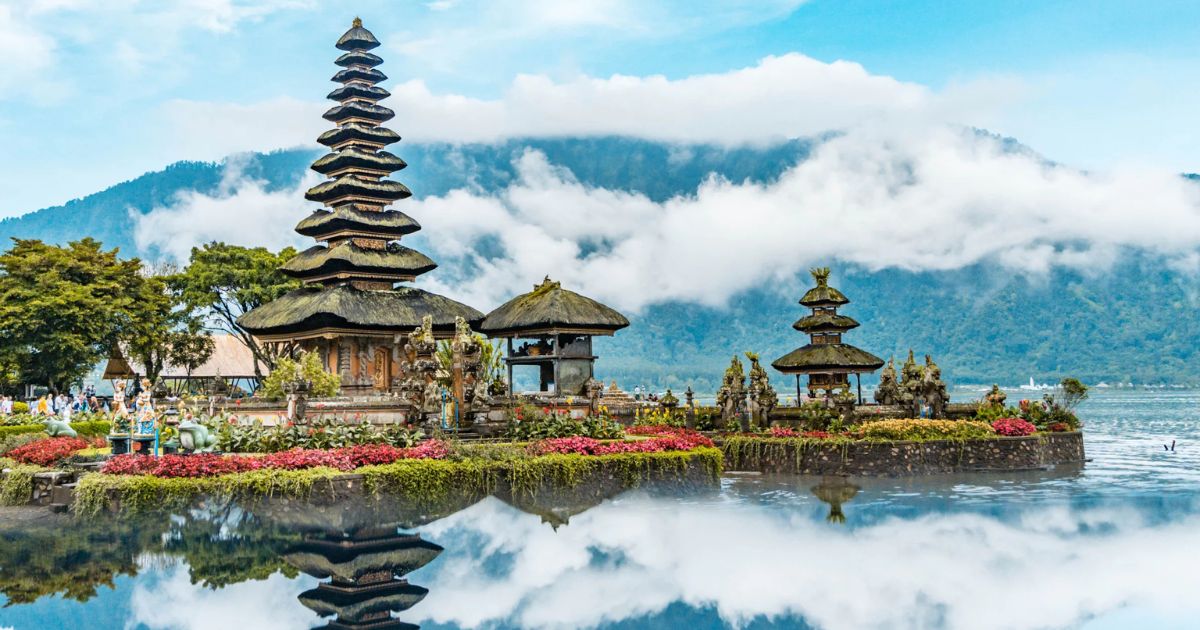Introduction
The island of Bali in Indonesia is renowned not only for its pristine beaches and vibrant culture but also for its rich spiritual and religious heritage. Central to this heritage are the temples of Bali, locally known as Pura. These temples are more than just places of worship—they are expressions of Balinese cosmology, art, community, and devotion.
Bali is often referred to as the “Island of a Thousand Temples,” but in reality, there are over 20,000 temples scattered across its mountainous landscapes, lush forests, and coastal regions. From ancient cliffside temples that overlook the Indian Ocean to jungle-ensconced shrines filled with mysticism, the temples of Bali offer a unique insight into the island’s soul.
Learn more about Temples of Bali on Wikipedia
Understanding Balinese Temples
The Role of Temples in Balinese Hinduism
Bali is the only Indonesian island where Hinduism is the predominant religion. However, Balinese Hinduism differs from the Indian variety, incorporating elements of animism, Buddhism, and local ancestral worship. Temples serve as the focal point for this spiritual syncretism, where rituals, offerings, and festivals are held to honor deities, spirits, and natural elements.
Temple Architecture
Balinese temples follow a unique architectural style. Some key components include:
- Candi Bentar (Split Gate): The entrance is symbolically split in two to represent the balance of opposing forces.
- Padmasana (Throne of the God): A tall shrine for the supreme god, Acintya.
- Meru Towers: Multi-tiered roof structures, usually odd-numbered, dedicated to specific gods.
- Courtyards: Temples typically have three courtyards representing different spiritual stages—Nista Mandala (outer), Madya Mandala (middle), and Utama Mandala (innermost).
Major Temples of Bali
1. Pura Besakih – The Mother Temple
Located on the slopes of Mount Agung, Pura Besakih is Bali’s most important, largest, and holiest temple. It is a complex of over 80 individual temples, with the main sanctuary dedicated to the Hindu trinity—Brahma, Vishnu, and Shiva.
- Significance: Spiritual center of Balinese Hinduism
- Highlights: Grand staircases, impressive stone carvings, panoramic views
- Festivals: Major religious ceremonies are held here, including Odalan (temple anniversary)
2. Tanah Lot – The Sea Temple
Perched on a rock formation in the sea, Tanah Lot is one of Bali’s most iconic landmarks. As the sun sets behind the temple, it creates one of the most photographed scenes in Indonesia.
- Significance: Dedicated to Baruna, the sea god
- Accessibility: At high tide, the temple becomes inaccessible
- Cultural Note: Non-Hindus are not allowed inside the inner sanctum
3. Uluwatu Temple (Pura Luhur Uluwatu)
Situated atop a steep cliff on the southern tip of Bali, Uluwatu Temple offers dramatic ocean views and is famous for its nightly Kecak dance performances.
- Significance: Guardian temple protecting Bali from evil sea spirits
- Attractions: Monkeys roam the temple grounds; be cautious with belongings
- Experience: The sunset Kecak performance is a must-see for visitors
4. Tirta Empul – The Holy Spring Temple
Located in the central highlands near Ubud, Tirta Empul is a temple complex built around a sacred mountain spring known for its ritual purification pools.
- Ritual: Devotees bathe in the spring to cleanse body and soul
- Legend: The water is believed to have healing powers bestowed by the god Indra
- Dress Code: Sarongs are required; available at the entrance
5. Ulun Danu Beratan Temple
This floating temple on Lake Beratan in Bedugul is dedicated to Dewi Danu, the goddess of lakes and rivers. Its tranquil location makes it one of the most peaceful and picturesque temples on the island.
- Features: Reflective lake views, lush botanical gardens
- Spiritual Role: Important for irrigation and agriculture prayers
- Photogenic Spot: Often featured on postcards and travel brochures
Lesser-Known but Equally Beautiful Temples

1. Goa Gajah (Elephant Cave Temple)
An archaeological site near Ubud, Goa Gajah is known for its stone carvings and ancient bathing pools.
- Era: Dates back to the 9th century
- Notable Features: Demon-faced entrance, meditation chambers
- UNESCO Tentative List: A culturally significant site
2. Pura Gunung Kawi
Located near Tirta Empul, this temple features 10 rock-cut shrines (candi) carved into a cliffside. Visitors must descend 300 stone steps through lush rice terraces to reach it.
- Purpose: Believed to be memorials to Balinese royalty
- Ambiance: Quiet, spiritual, and surrounded by nature
3. Pura Taman Ayun
This royal temple in Mengwi was built in the 17th century and is surrounded by a moat, giving it a floating appearance.
- Design: A fine example of Balinese temple layout and landscaping
- UNESCO Listing: Part of the Cultural Landscape of Bali
Festivals and Ceremonies
Balinese temples are active centers of religious life, with thousands of ceremonies held annually. Some key festivals include:
- Galungan and Kuningan: Celebrating the victory of good (Dharma) over evil (Adharma)
- Nyepi: Balinese New Year; a day of complete silence
- Odalan: Each temple’s anniversary, held every 210 days
During these events, temples are decorated with penjor (bamboo poles), canang sari offerings, and vibrant gamelan music and traditional dances fill the air.
Etiquette When Visiting Balinese Temples
To show respect for local customs and religious practices, visitors should observe the following:
- Dress Modestly: Wear sarongs and sashes (often provided at the entrance)
- No Entry During Menstruation: A cultural rule observed by local Hindus
- Don’t Climb on Structures: Temples are sacred spaces, not playgrounds
- Don’t Point Feet at Shrines: Considered disrespectful
- Seek Permission Before Photography: Especially during ceremonies
Temples and Balinese Identity
The temples of Bali are deeply woven into the social, cultural, and spiritual fabric of the island. Every Balinese family compound has at least one small temple, and each village contains several public temples, including:
- Pura Desa – dedicated to Brahma and the welfare of the village
- Pura Puseh – dedicated to Vishnu and ancestral spirits
- Pura Dalem – dedicated to Shiva and death rituals
These structures not only serve religious functions but also define the community’s identity and unity.
Conservation and Challenges
Despite their resilience, Balinese temples face challenges such as:
- Tourism Impact: High foot traffic can damage ancient stonework and pollute sacred areas.
- Environmental Threats: Rising sea levels and earthquakes endanger cliffside and coastal temples.
- Overdevelopment: Urban sprawl and commercial activities can encroach on sacred spaces.
Efforts are ongoing to preserve temples through government programs, UNESCO initiatives, and local community action.
Visit Wikipedia for detailed information on Temples of Bali
Temples as Tourist Attractions
While spiritual in nature, Balinese temples are also key tourist attractions, providing:
- Cultural Immersion: Visitors gain insights into Balinese art, architecture, and rituals.
- Photography Opportunities: These temples are among the most visually stunning in Southeast Asia.
- Guided Tours: Available in most major temples, often including historical background and ceremonial explanations.
However, it is important to remember that these are living religious sites, and respectful behavior is always essential.
Conclusion
The temples of Bali are not just ancient stone structures; they are vibrant centers of life, spirituality, and tradition. Each temple tells a story—of gods and mortals, of rituals and community, of beauty and belief. Whether you are a spiritual seeker, a history buff, or a curious traveler, exploring Bali’s temples will offer you a deeper appreciation of the island’s culture and soul.
From the majestic Pura Besakih to the ocean-guarding Tanah Lot, from sacred springs at Tirta Empul to cliff-top majesty at Uluwatu, each temple invites you to pause, reflect, and connect.
If you plan to visit Bali, make sure the temples are high on your itinerary—not just for their beauty, but for the serene and spiritual experiences they offer.




